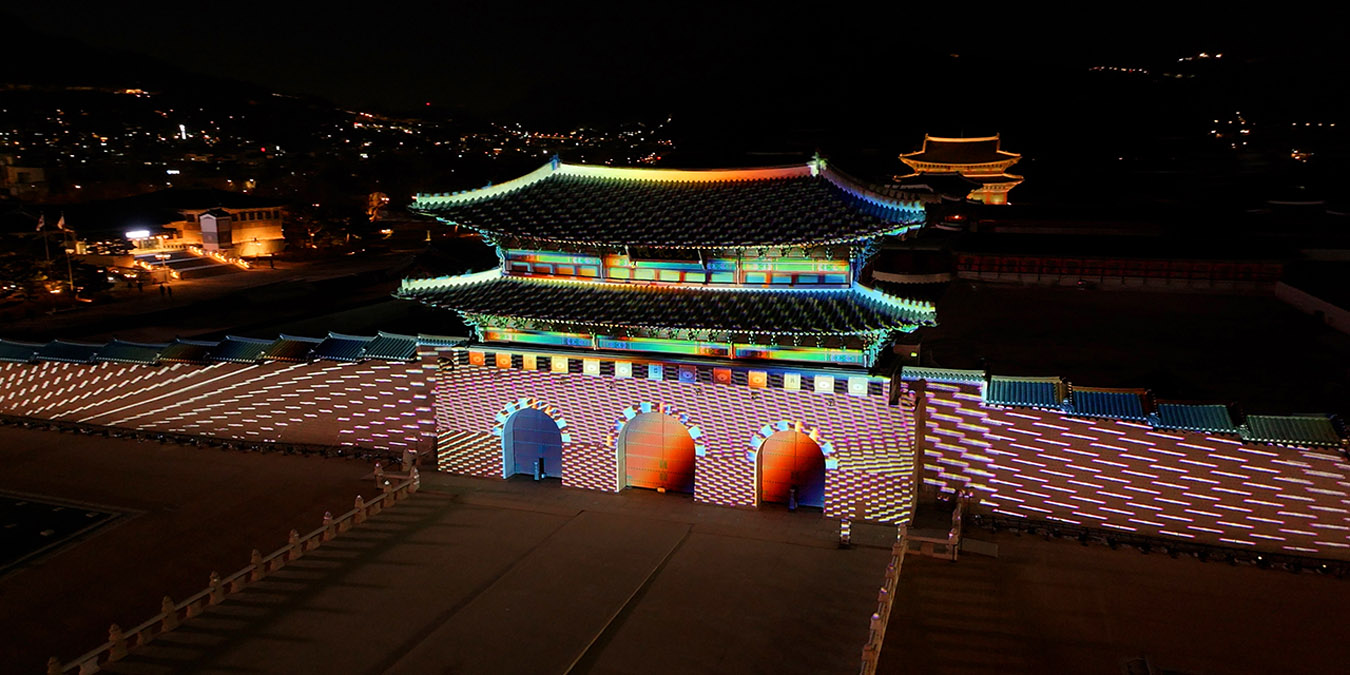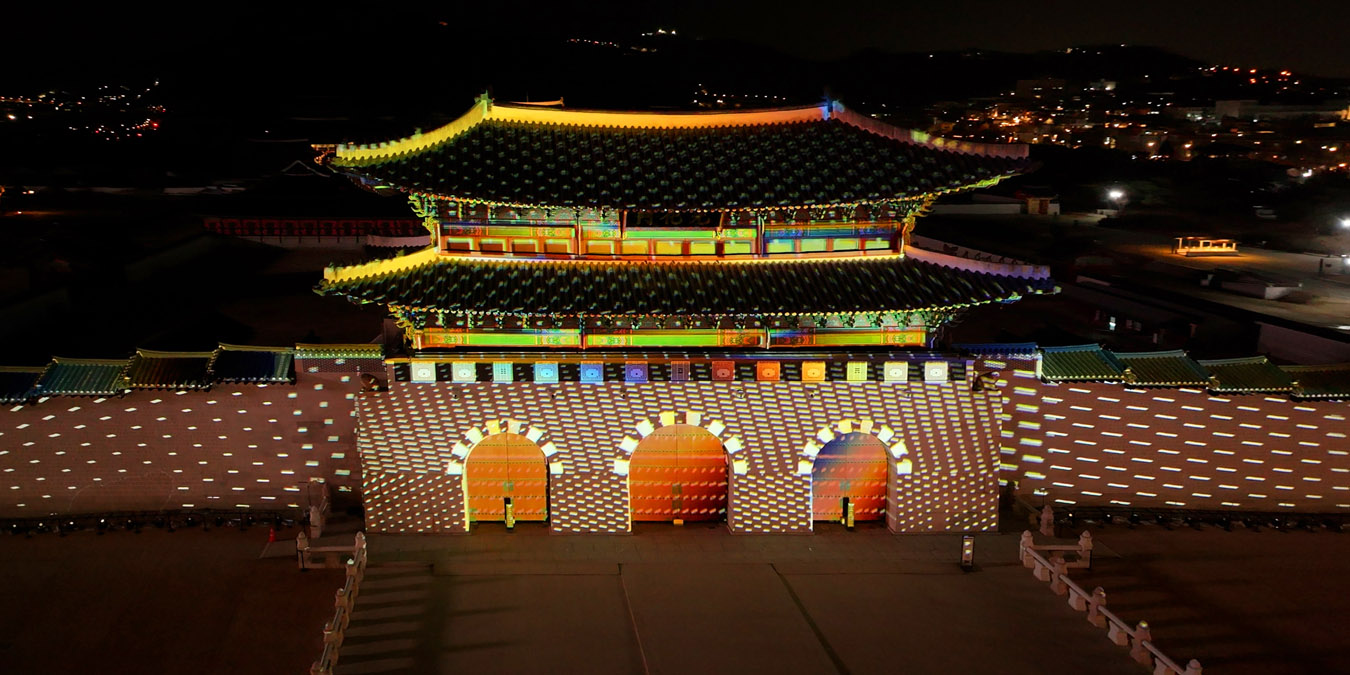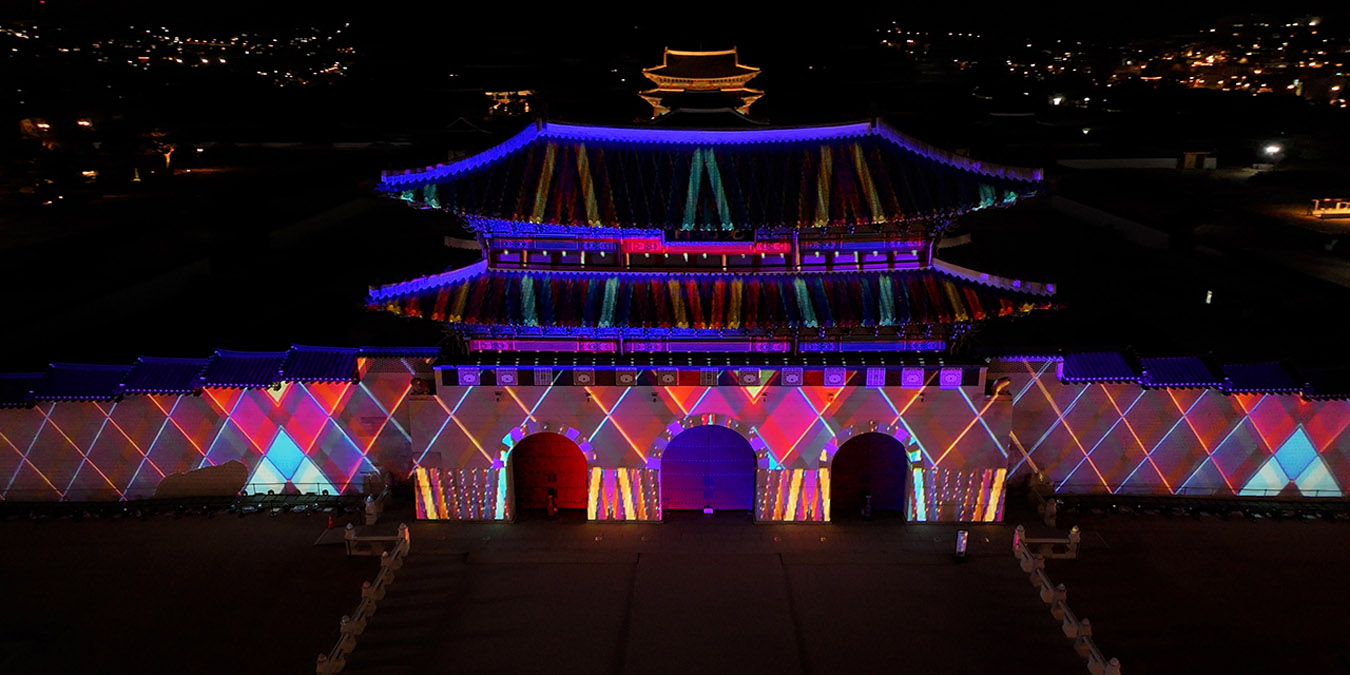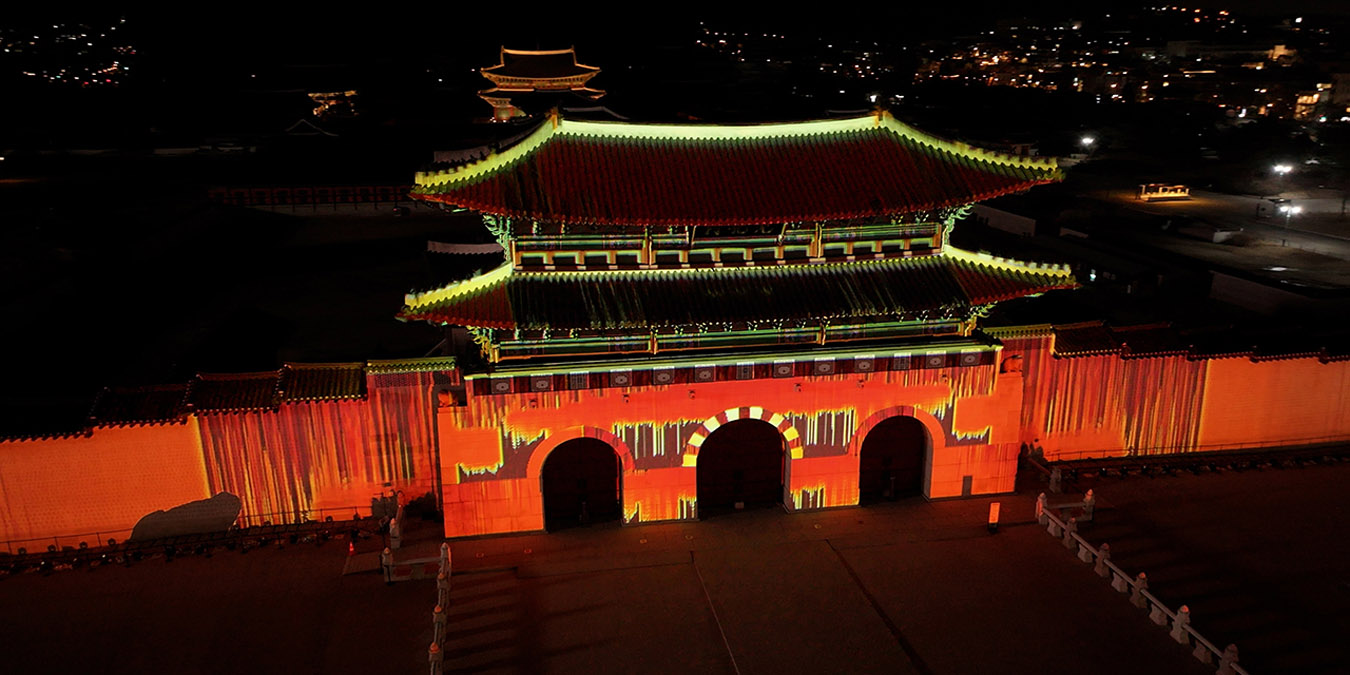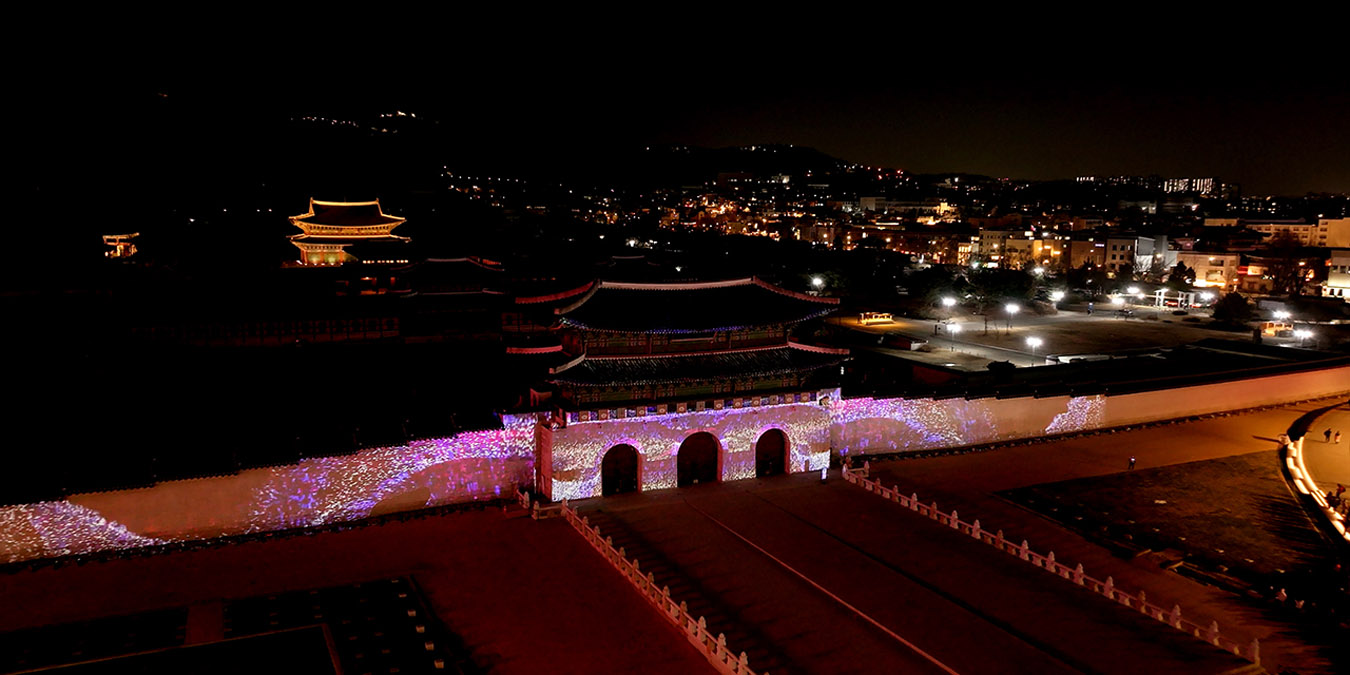The first phase in the project was to research the location as it is a site-specific project. Gwanghwamun is an historic and symbolic landmark, representing Korea’s royal heritage and architectural grandeur. Projection mapping on such a prominent site can deepen public engagement with Korean history and culture. Located in a central area of Seoul, Gwanghwamun is highly visible and frequented by both locals and tourists. Projecting visuals on this prominent site ensures broad exposure and impact, making it an effective venue for public art, cultural events, and educational displays.
Understanding the location, we then had to decide on a way to visually interpret the space with animated light sequences. We used light as a way to explore consciousness. Projection mapping plays with perception, creating illusions that can alter our experience of reality. This reflects how consciousness interprets sensory input and constructs our understanding of the world.
The next phase in the project involved art direction and story boarding. We gathered visual references of patterns and optical illusions that represented concepts of change and impermanence to create style frames to refine the way in which we would express our ideas. We selected the sound to accompany the project and created animatics for each pass of the show.
The artwork was animated using a combination of tools. The animation assets were generated in After Effects and Cinema 4D. Premier Pro was used to do the final editing where the audio became a device to complement and enhance the visuals. Animations were reworked to get the timing and pacing correct and work with the overall flow of the piece. Rendering and export of the show on completion.
The artwork was the sent to the Soul Light Festival production team who augmented the artwork onto the surface of the building using mapping software tools.

